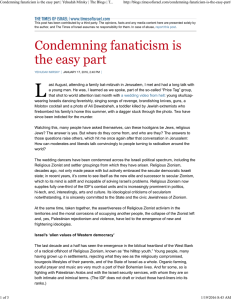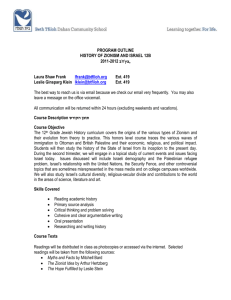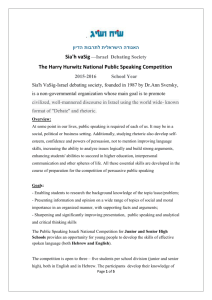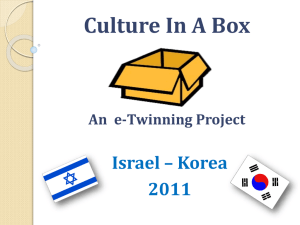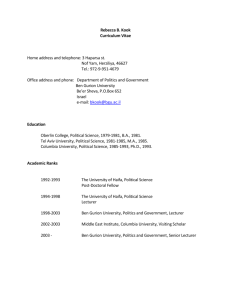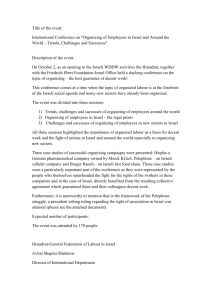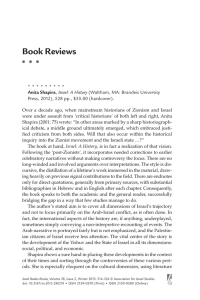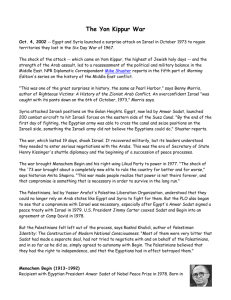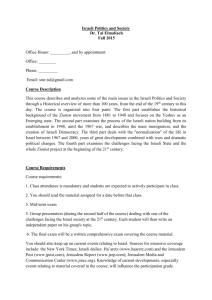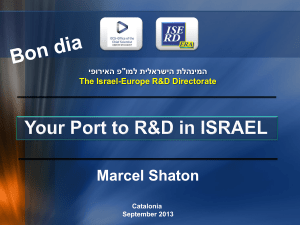Jewish identity in Israel
advertisement
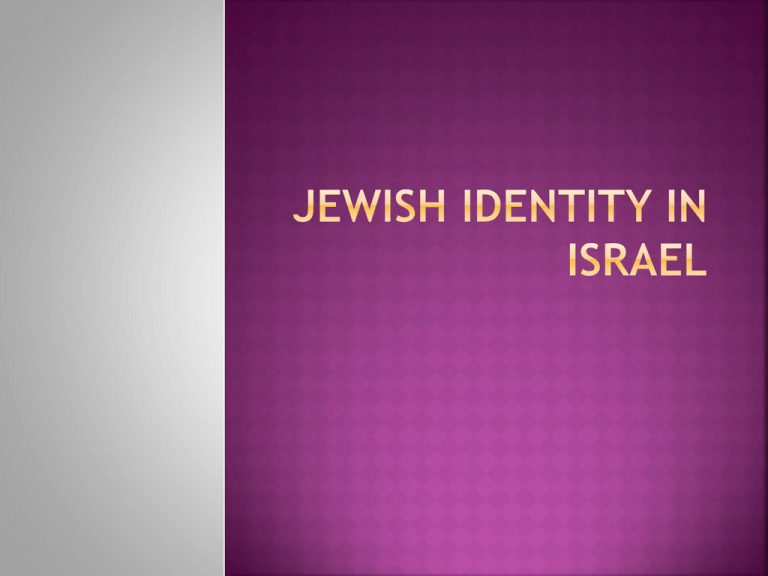
The political-religious connection A map of religious groups Some historical landmarks of religion in Israel. The theological roots: attitude of four main religious groups to Zionism and redemption Focus on UO sector: characteristics and contemporary trends. (Radical RZ and Shas – overview) (The secular-Religious conflict in Israel). “Na Nach Nachma Nachman Meuman” Religion Politics Israeli identity “Dati” (religious) Right wing politics “Hiloni” (secular) Left wing politics Ultra Orthodox Religious Lithuanian Modern Orthodox Hassidic Religious Zionist Sephardic (Shas) Radical Religious Zionist Traditional Secular Mainstream traditional Nonreligious “Masorti” and Reform streams Antireligious Hassidim –(30+ large groups) Mainstream Hassidim Beltz Gur, Kerlitz Teshuva Hassidim Radical Hassidim Habad, Breslov, Neturei Karta, Satmar 40-45% 35% secular (5% anti-religious) - 40% “mesorati” (traditional) (27% non religious “mesorati” 12% religious “mesorati”) 9%- 12% Orthodox 5-10% Ultra-Orthodox 1945 - Few UO Holocaust survivors 1947 - Ben Gurion’s “Status quo” with Aguda. 1949 - “Unified religious front” part of first government (includes Haredim) 1950’s - First conflicts: Aguda leaves government over women soldiers, Ben Gurion resigns over Yemenite’s religious education. 1962 - Legal issues: Who is a Jew? Brother Daniel. 1977 – Religious parties caused downfall of government over desecration of Sabbath. Gradually, increased power, more political parties. (in current Knesset: 3 umbrella parties) 1999 – “the ½ million demonstration” against high court’s anti religious bias. 2000 – Tal Law – attempt to regulate and minimize UO exemption from IDF service. 1. Extreme rejection of Zionism, demonization of Israel. 2. Rejection of secular character of State. 3. Compartmentalization 4. Expansion: Israel=ongoing redemption. Deterministic messianism Essentialism Perfectionism This leads both to reject the state of Israel, its law, and pragmatic politics. (Ravitzky, 1993) A commitment to Jewish Israeli peoplehood An attempt to direct Israel to a more religious path. (relatively) pragmatic political involvement. The question of Zionism Stance towards modernity Stance towards the “secular” Stance towards army service, state civil religion and “common narrative”. About 600,000 people today. Although presented as traditional, are a modern phenomenon: traditionalists. Ultra Halachically observant; Orthopraxis as core. Value religious radicalism. Enclave community. Learners community. Comprehensive; religious norms govern all areas of life from show lace tying to agricultural planting. Hierarchical; “The table test”. Overtly, still a-zionist (most) or anti-zionist (minority). However, many identify with Israeli public; participate in Zionist political system. very poor population (56% below poverty line, earn on average ½ of Israeli population’s salary) Strong gender segregation High rate of childbirth (n=6.5) Anti-modernity values, but not technology. Gradually changing in both radical and modern directions. Complex theological changes. “All the Great leaders of Israel have warned us that the impurity of Zionism is the root and source of all the troubles that are in the world, spiritually and concretely”. “Answer to the soldier and the policeman According to the laws of the Torah it is forbidden completely to transfer Jewish land to a nonJew”. Warning: “Preserve your souls! A serious warning to the population that rides Geula taxis between Bnei Brak and Jerusalem: Beware, most of the drivers are Arabs, avid supporters of Hamas. Their Koran commands every single Arab to destroy the Jews”. The danger of the computer. Recently new destructive focres that we never imagined have caused many of us to bring into our homes through computers poison that kills, God forbid, and threatens to destroy the entire sanctity of the Jewish home”

